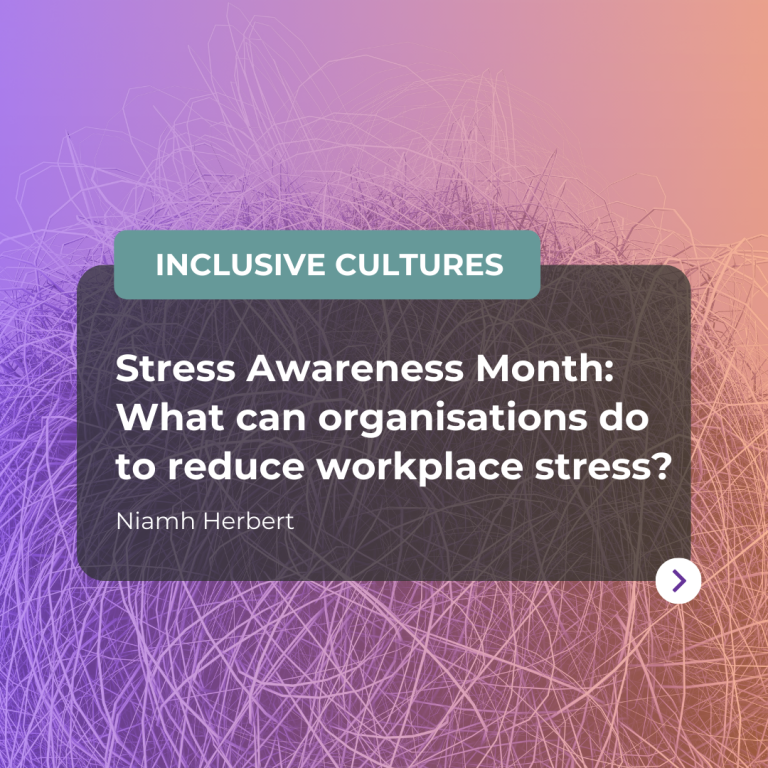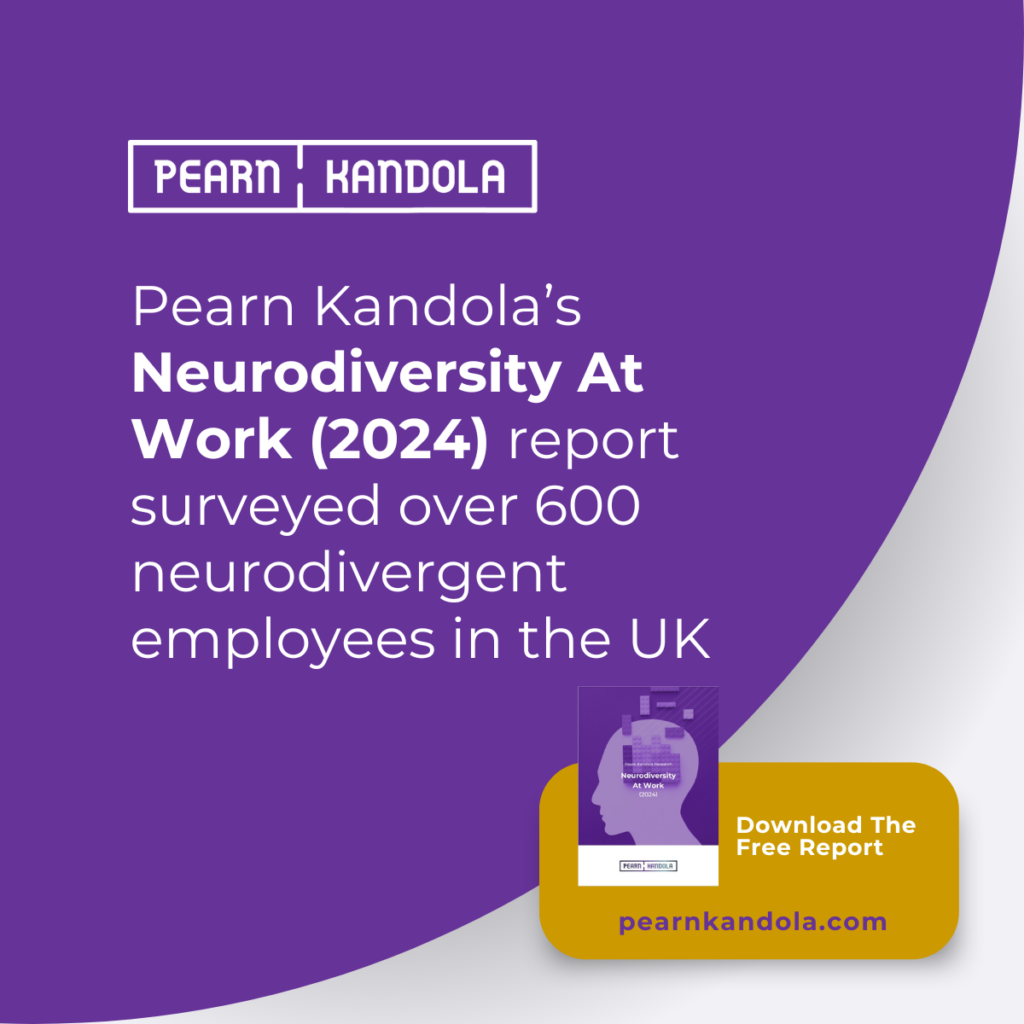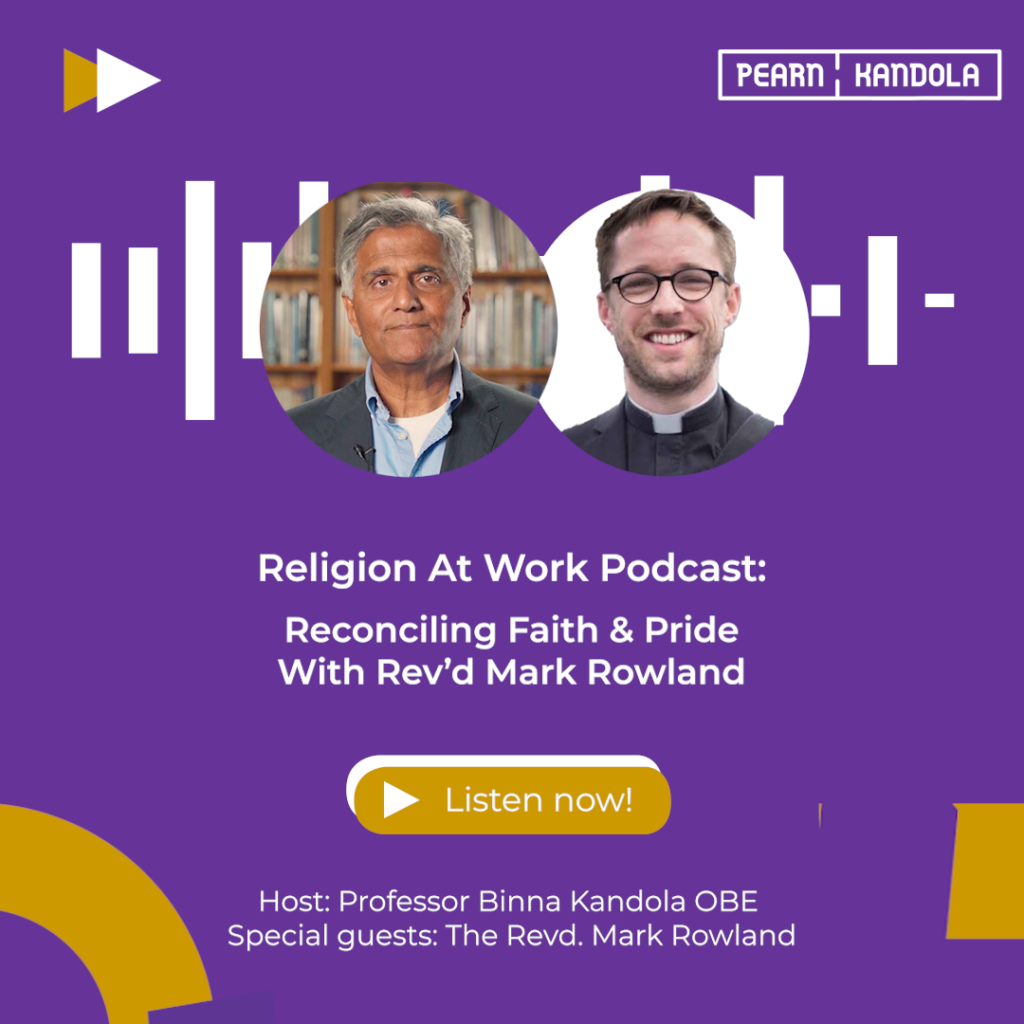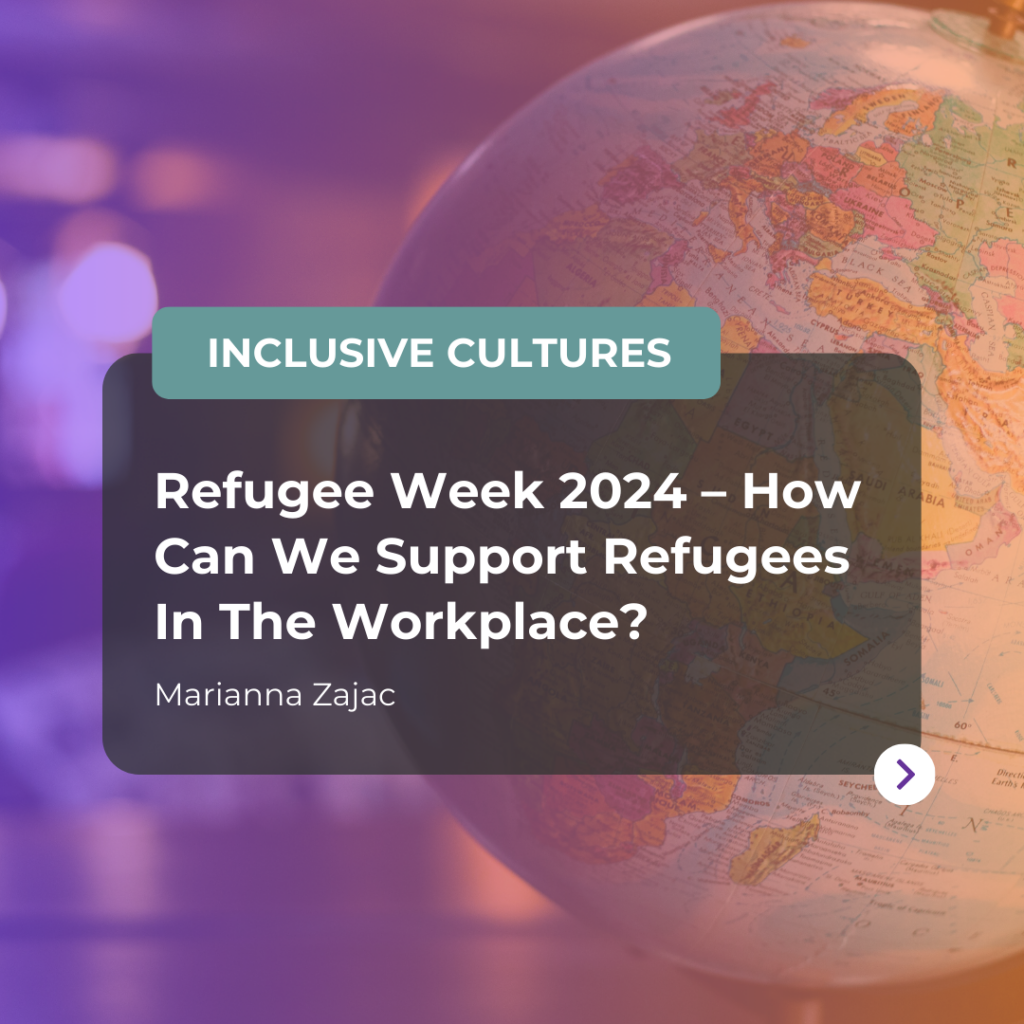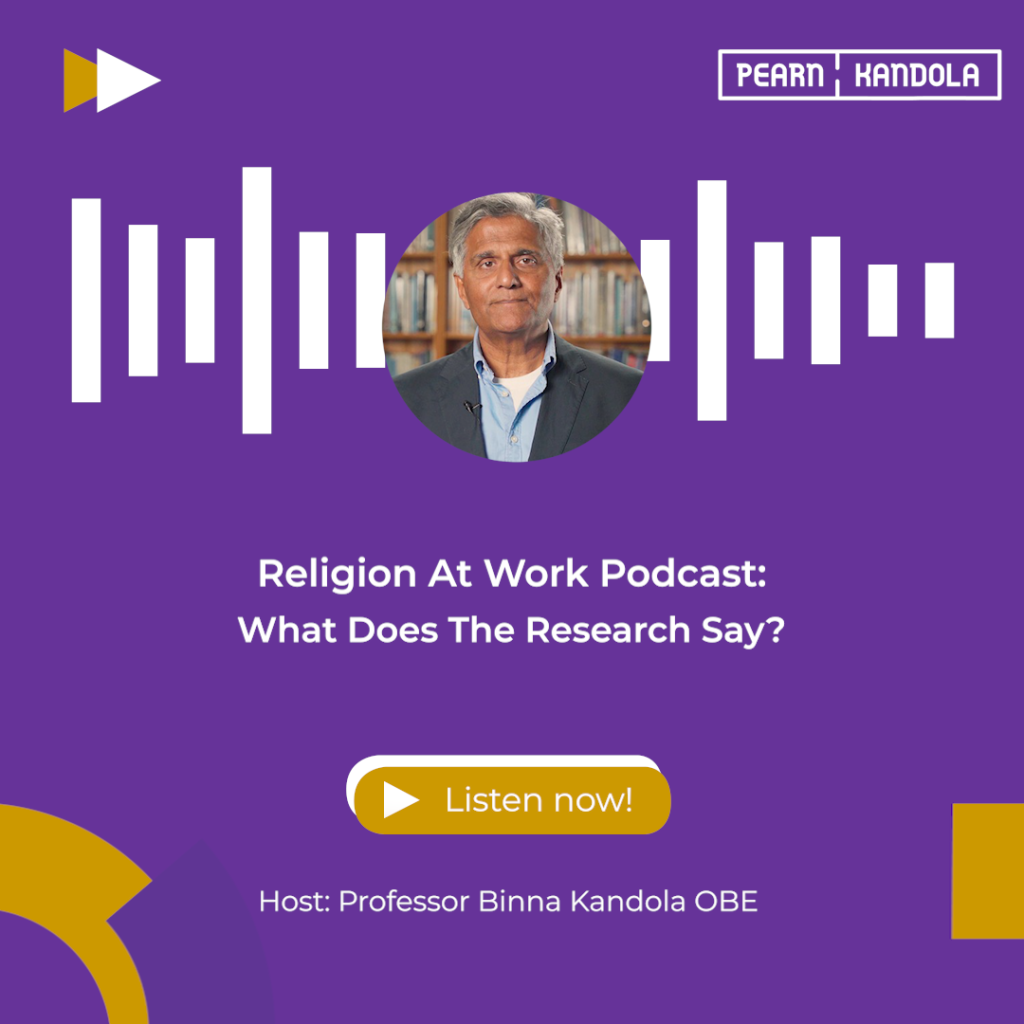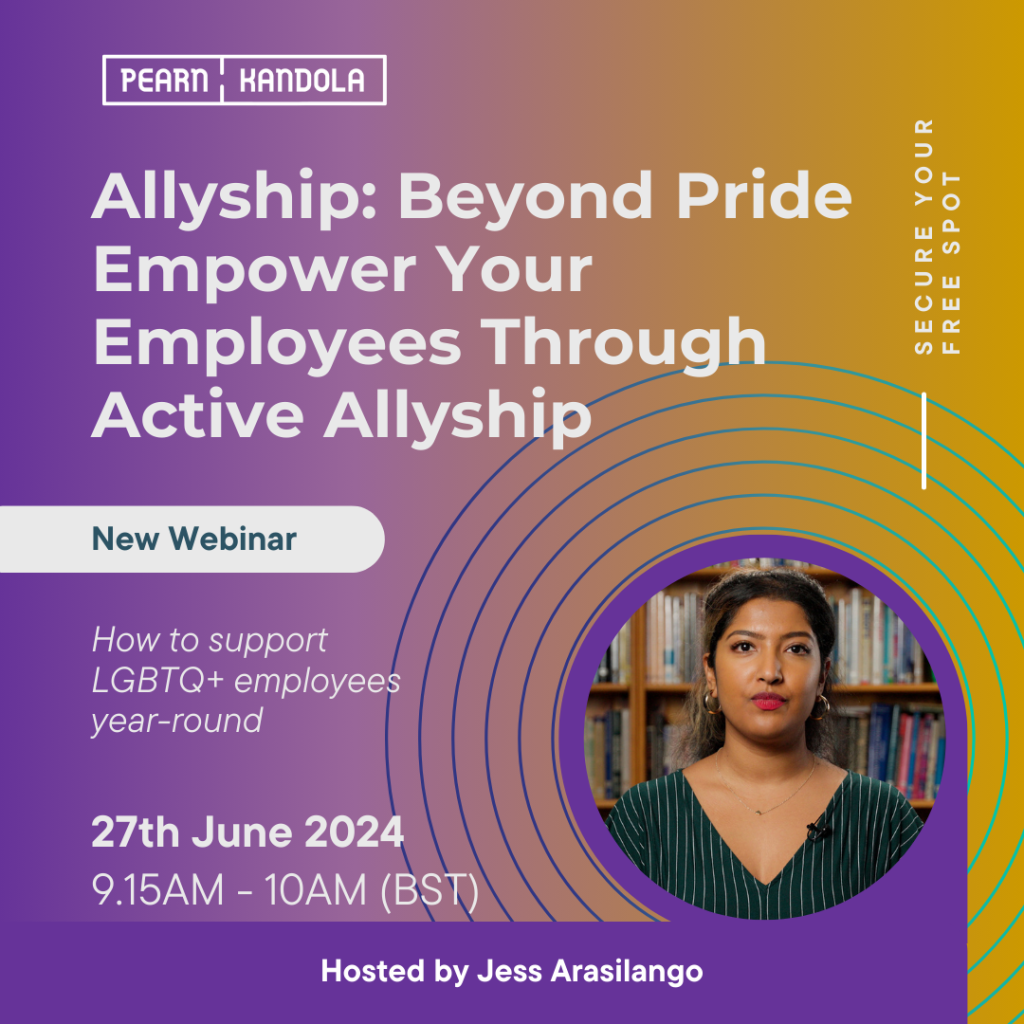Did you know that April stands as National Stress Awareness Month? This is a good opportunity to reflect upon the stress in our lives and the impact it has.
In today’s world, the term ‘stress’ can be used on a daily basis, but what does it actually mean and how can it affect us?
What is stress?
Stress is defined as a “state of worry or mental tension caused by a difficult situation. Stress is a natural human response that prompts us to address challenges and threats in our lives” (World Health Organisation, 2023).
Most of us will have periods of short-term stress throughout our lives, in response to a specific event. However chronic stress is the consistent sense of feeling overwhelmed and pressured within daily life, which can occur in both personal and our professional lives.
Why should I pay attention to stress?
Well, stress impacts our health in multiple ways, whether it be physically or mentally. Stress can impact us physically through headaches, fatigue, and high blood pressure, and is linked with a higher risk of heart disease and a weaker immune system.
Mentally, the consequences of stress can range from insomnia and depression, to a difficulty with cognitive functions such as memory and decision-making abilities.
What about the impact of stress in the workplace?
Within the workplace, stress is not a distant feeling with 52% of workers in Britain reporting they feel ‘very’ or ‘fairly’ stressed at work (YouGov, 2022).
When looking at the causes of stress in the workplace, appraisal and coping are key areas to look at according to Krohne (2002). Within the work environment, how we evaluate situations can determine how much stress we will feel. This links to how we cope with stressors and whether we have healthy strategies in place to support ourselves.
In this article we will answer three important questions regarding stress at work:
- How does stress impact a leader’s ability to be inclusive?
- How does discrimination and exclusion experienced by minority individuals at work lead to stress and anxiety?
- How can a culture of stress impact individuals and organisations?
How stress impacts leadership and inclusion
The research tells us that when leaders within organisations are under stress, it can impact their ability to communicate and make fair decisions, being more likely to ignore contributions from marginalised groups (Barsade & Gibson, 2007).
According to Yu (2016), humans often default to heuristics and gut instincts when stressed or under pressure. Simply put, a heuristic is a decision-making approach that is not fully optimised or rationalised, but is sufficient for reaching an immediate, short-term goal.
This means we are less likely to make goal-orientated and calculated decisions. This can lead to discrimination towards marginalised or minority groups within the workplace.
Within psychology, the research leads us to believe that humans have two key mechanisms for responding to information: system 1 and system 2 (The Decision Lab 2023).
System 1 thinking is an instantaneous approach, which occurs with little effort and intuitively. It links to instinct and our previous experiences with the world. For instance, tying your shoelace or solving 2+2.
On the other hand, system 2 thinking requires more effort, being logical, rational, and conscious. An example of this is looking for a friend in a crowd or solving 24×15.
When under stress or pressure to make quick decisions, system 1 is used more frequently due to its fast and automatic nature. Within system 1, our stereotypical beliefs and biases drive our choices, often without our conscious awareness of doing so.
These psychological explanations and research demonstrate how, when under stress or time-pressures, leaders can make swift and reactive decisions which can lead to biases.
How exclusion causes stress in minorities at work
What is the impact of this exclusion on an individual’s mental health?
Exclusion, marginalisation, and discrimination all lead to numerous negative feelings and a decline in employees mental health (Pascoe & Richman, 2009). Chronic stress and anxiety can be common when individuals have a lower self-esteem and lack of sense of belonging.
Meyer’s minority stress theory (1995) explains how minoritised groups consistently experience financial hardships, discrimination, and limited access to resources. This can be seen within the workplace environment with promotions being less likely, as well as limited career development opportunities and social isolation.
Interestingly, Pascoe & Richman (2009) also found that merely the perception of discrimination can lead to a high stress response, which can lead to behaviours such as withdrawal. This is supported by research that found the body prepares to be more physically reactive in stressful or even a potentially stressful situation, after a repeated exposure to discrimination (Guyll et al., 2001).
These studies demonstrate the long-term impact of bias, stigma, and discrimination through the physical differences in our stress responses and cortisol levels.
Inclusion is vital for individuals’ well-being, with Richman et al. (2009) finding lower depressive symptoms for employees who seeked social support. This illustrates the power of inclusive practices, policies, and behaviours within organisations with employees feeling happier.
This leads to increased work productivity and performance, and focused and motivated individuals who are engaged and find a sense of purpose in their work.
How workplace culture impacts stress
In certain organisations, stress has become normalised, and it has become embedded in the workplace culture. This could be seen through excessive dedication, working long hours, heightened performance expectation, and blurred balance between work and personal lives.
The impact of stress within organisations can lead to a negative impact on well-being, performance, and job satisfaction. In the long-term, health problems can occur from high levels of anxiety and burnout.
Issues within the workplace environment will also begin to occur such as challenges on interpersonal relationships, decreased cognitive function and less effective decision making. All these areas affect the levels of inclusion within organisations and leave minorities vulnerable to exclusion and discrimination.
What can we do to minimise stress in the workplace?
In conclusion, what can we do as individuals to minimise our own stress, remain inclusive within our decisions, and reduce discrimination faced by minorities within the workplace?
- Create healthy boundaries
This involves making divisions between work and personal lives, being particularly significant if you work from home. It also may include flexible working and realistic expectations of the role and yourself, such as being open about your capacity.
To support this, remind yourself on the importance and advantages of exercise, healthy lifestyles, and mindfulness.
- Educate ourselves on diversity and inclusion issues
Acknowledging and challenging our own biases is crucial as it allows us to make the necessary changes to increase the inclusivity of our actions and behaviours.
Actively seeking diverse perspectives in decision-making processes will allow for a broader range of opinions.
- Advocate for inclusive policies and practices within our organisations
Not only fixing our own behaviour but speaking up against discrimination or micro-incivilities when we witness them is key. We can do this by being an active bystander against bias or inequity that we may see within our organisation.
What can organisations do to minimise stress in the workplace?
There are a number of things organisations can do to further support employees with stress and minimise exclusion for minority employees.
- Provide mental health resources and support
Companies can run seminars or training sessions on stress management to help employees develop healthy coping strategies and improve their mental well-being.
Additionally, organisations could provide confidential counselling services or access to trained professionals.
- Training on unconscious bias and cultural sensitivity
Unconscious bias training helps individuals become more aware of their own biases and assumptions, which can lead to discriminatory behaviour towards minority groups and increase their stress responses.
This type of training can help create a more supportive environment for employees from minority groups, leading to increased engagement, productivity, and overall well-being in the workplace, where all employees feel valued and respected.
- Create a safe and inclusive work environment
Organisations should promote a culture of open communication and destigmatise mental health by encouraging employees to seek help when needed.
This can be done through internal communications, awareness campaigns, and leadership modelling positive behaviours around mental health. Companies should fostering an inclusive and understanding culture of respect.
- Actively listen to the needs and concerns of team members from minority groups
This involves a genuine effort to understand the perspectives, experiences, and challenges faced by individuals from minority groups.
This may include addressing systemic inequalities or prioritising diversity in leadership roles. The importance of empathy and validating their experiences are critical.
If you’re looking for ways to address exclusion in the workplace, increase diversity across your leadership and minimise stress, then please email us via info@pearnkandola.com to see how we can help.
References
- Barsade, S. G., & Gibson, D. E. (2007). Why Does Affect Matter in Organizations? Academy of Management Perspectives, 21(1), 36–59. https://doi.org/10.5465/amp.2007.24286163
- Guyll, M., Matthews, K. A., & Bromberger, J. T. (2001). Discrimination and unfair treatment: Relationship to cardiovascular reactivity among African American and European American women. Health Psychology, 20(5), 315–325. https://doi.org/10.1037/0278-6133.20.5.315
- Kirk, I. (2022, July 18). Half of British workers say they feel stressed at work | YouGov. https://yougov.co.uk/society/articles/43172-half-british-workers-say-they-feel-stressed-work
- Krohne, H. W. (2001). Stress and Coping Theories. International Encyclopedia of the Social & Behavioral Sciences, 15163–15170. https://doi.org/10.1016/b0-08-043076-7/03817-1
- Meyer, I. H. (1995). Minority Stress and Mental Health in Gay Men. Journal of Health and Social Behavior, 36(1), 38–56. https://doi.org/10.2307/2137286
- Pascoe, E. A., & Smart Richman, L. (2009). Perceived discrimination and health: A meta-analytic review. Psychological Bulletin, 135(4), 531–554. https://doi.org/10.1037/a0016059
- Pierson, P., Hamilton, A., Pepper, M., Root, M., & Lawyers. (2017). Alabama Law Scholarly Commons Alabama Law Scholarly Commons Articles Faculty Scholarship 2017 Stress Hardiness and Lawyers Stress Hardiness and Lawyers Recommended Citation Recommended Citation STRESS HARDINESS AND LAWYERS. Legal Prof, 1. https://scholarship.law.ua.edu/cgi/viewcontent.cgi?article=1525&context=fac_articles
- The Decision Lab. (2023). System 1 and System 2 Thinking – The Decision Lab. The Decision Lab. https://thedecisionlab.com/reference-guide/philosophy/system-1-and-system-2-thinking
- World Health Organization. (2023, February 21). Stress. World Health Organisation. https://www.who.int/news-room/questions-and-answers/item/stress
- Yu, R. (2016). Stress potentiates decision biases: A stress induced deliberation-to-intuition (SIDI) model. Neurobiology of Stress, 3, 83–95. https://doi.org/10.1016/j.ynstr.2015.12.006
